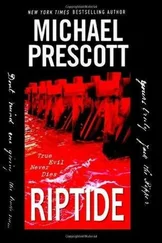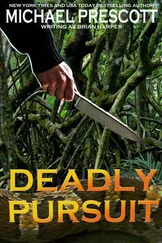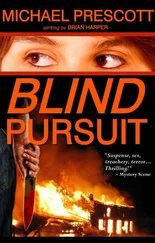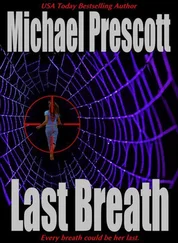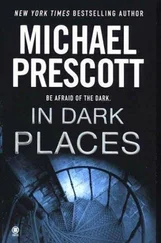Michael Prescott - Stealing Faces
Здесь есть возможность читать онлайн «Michael Prescott - Stealing Faces» весь текст электронной книги совершенно бесплатно (целиком полную версию без сокращений). В некоторых случаях можно слушать аудио, скачать через торрент в формате fb2 и присутствует краткое содержание. Жанр: Триллер, на английском языке. Описание произведения, (предисловие) а так же отзывы посетителей доступны на портале библиотеки ЛибКат.
- Название:Stealing Faces
- Автор:
- Жанр:
- Год:неизвестен
- ISBN:нет данных
- Рейтинг книги:4 / 5. Голосов: 1
-
Избранное:Добавить в избранное
- Отзывы:
-
Ваша оценка:
- 80
- 1
- 2
- 3
- 4
- 5
Stealing Faces: краткое содержание, описание и аннотация
Предлагаем к чтению аннотацию, описание, краткое содержание или предисловие (зависит от того, что написал сам автор книги «Stealing Faces»). Если вы не нашли необходимую информацию о книге — напишите в комментариях, мы постараемся отыскать её.
Stealing Faces — читать онлайн бесплатно полную книгу (весь текст) целиком
Ниже представлен текст книги, разбитый по страницам. Система сохранения места последней прочитанной страницы, позволяет с удобством читать онлайн бесплатно книгу «Stealing Faces», без необходимости каждый раз заново искать на чём Вы остановились. Поставьте закладку, и сможете в любой момент перейти на страницу, на которой закончили чтение.
Интервал:
Закладка:
Enemies. Yes.
Every psychiatrist made enemies, and a man like Cray, a man who supervised a mental institution harboring scores of patients, would make more enemies than most.
Rivera laughed. “Man, I told you she’s a squirrel.”
Stern, at least, was polite enough not to say a word.
“Sounds like you were right,” Shepherd said without rancor. “On the other hand, just because he’s a shrink doesn’t mean he’s not a killer.”
This was, in part, bravado. But he couldn’t shake free of that word mask. It fit the case too well.
“You happen to ask if Cray drives a Lexus?” he added.
Kroft’s smile slipped a little. “Yeah, I asked. He’s got one — an SUV, like the woman said. But any of his patients could know that. It doesn’t prove anything.”
“No,” Shepherd said. “It doesn’t.” He scraped back his chair and got up. “Better get moving. It’s still early. I might be able to catch him before he goes to lunch.”
Kroft looked baffled. “You figure it’s even necessary to do a meet-and-greet? I mean, you could phone the guy, or I could have Wheelihan send some deputies to chat him up.”
“I can’t tell much from a phone call. And it sounds like the local deputies are a little too friendly with this guy.”
Stern spoke. “You don’t still think there’s anything to this?”
“I’ll know soon enough when I talk to Cray. And when I take a look at that Lexus of his.”
Brookings looked unhappy. “I’m betting it hasn’t got a scratch. Face it, Shep. The lady’s a head case.”
“My second one today. Looks like I hit the jackpot. Lucky me.”
He meant it as a joke, but it hit too close to home, and nobody was laughing as Roy Shepherd walked out the door.
21
The Hawk Ridge Institute for Psychiatric Care was a large, rambling complex of brick buildings, none higher than two stories, set amid rolling greenery in the foothills of the Pinaleno Mountains. Route 366 was nearby, feeding traffic into Safford, but the institute lay on a desolate back road, and its neighbors were farms and ranches and, a few miles distant, a federal prison camp.
From the road, the institute looked something like a prison itself, with its high iron fence and the guardhouse at the gate. But once inside the grounds, visitors were surprised to see flower beds, neatly tended, and sparkling fountains and birdbaths and colonnades of eucalyptus trees. The less severely afflicted patients were free to roam the property, and they could be seen here and there, some clustered in companionable groups, others solitary.
The administration building and one ward of the institute had been built in 1942. By the mid-1960s two more wards had been added, both of them L-shaped one-story structures well removed from the heart of the complex.
Then the trend of deinstitutionalizing mental patients had begun, and over the next thirty years Hawk Ridge’s population dropped by more than half. Today the institute housed one hundred and thirty-three patients, most of them considered chronic and untreatable — the hard cases who did not respond to medication. Only two of the three wards were in use; the third. Ward C, had been shut down as an economy measure. It stood in decrepit isolation, a windowless shell, one of its doors padlocked, the other bolted shut. Occasionally a staff member with a passkey slipped inside to smoke a joint or indulge some other secret vice.
Hawk Ridge was a peaceful place, and remarkably picturesque. The staid facade of the administrative center was softened by closely trimmed fir trees. Behind and above the building were the tall mountains, brownish at the lower elevations, rising to green, the details of even the highest ridgeline visible in the pellucid air.
Sometimes a hawk or, more seldom, a turkey vulture could be seen riding the high thermals, circling above a hidden gorge, and at night the cries of coyotes were heard, shrill and ghostly and unmelodic, though all too often they were drowned out by the screams.
There were screams, of course. In Ward B, known as the violent ward, where the hardest of the hard cases were kept, the screams seemed never to end. There were patients who could be prevented from screaming only by the massive application of tranquilizing drugs, and even then they would eventually learn to tolerate the medication, which would lose its effect.
Some patients would scream all the time if there were no sedatives to quiet them. Others, who cycled through stages of illness, had their lucid periods, when they could be transferred to Ward A, the admitting ward. Here they were installed as temporary guests, until their precarious mental balance was upset, and they had to be drugged and restrained in a private cell.
So, nearly always, there was somebody screaming, but the staff — three psychiatrists, seven supervising nurses, two dozen therapy aides, eight security officers, three cooks, and assorted groundskeepers and maintenance personnel — had learned to pay no attention to the noise.
Only the hospital director, John Bainbridge Cray, M.D., did not ignore the screams.
He rather liked them.
This had been a hectic morning for Cray. He had arrived at his home on the hospital grounds at 8:45, exhausted after his long night and only moderately revived by the coffee he’d consumed during the drive from Tucson.
Quickly he showered and changed, then spent some time in his garage, taking care of a few unpleasant but necessary details.
By 9:20 he was in his office. To his secretary, Margaret, he excused his tardiness by saying he’d forgotten to set his alarm dock.
His first order of business was a conference call involving an allegation of misconduct by a therapy aide, David Wilson. Wilson was accused of having beaten an unruly patient, Jocelyn Beatty, who had checked into the hospital voluntarily after experiencing symptoms of manic-depressive illness.
He spent half an hour on the phone with the patient’s mother, the attorney she had retained to represent her daughter, and a case officer employed by the Arizona Health Services Department. Cray informed them that David Wilson already had been placed on paid leave pending the outcome of an internal investigation. He offered to turn over Wilson’s duty logs to the attorney. He promised his full cooperation. And he meant it.
Cray took any allegation of misconduct with the utmost seriousness. The patients in his care were never to be mistreated. In the performance of his duties, he adhered to the most conscientious standards of professionalism. It was a point of pride with him.
Was this an inconsistency in a man of his predilections? He supposed so. But in truth he did feel something special for his patients. The women he had killed — they were nothing, merely lab rats, experimental animals set loose to run a deadly maze. The patients at the hospital, on the other hand, were his charges, almost his children, and he would not let them be hurt.
Well, there had been one exception. One patient he had meant to harm. But he’d never had the chance.
At least, not yet.
When the phone call was done, he hosted a meeting in his office. A patient, Dennis Callaghan, was set to be discharged. Cray served coffee and pastries to Dennis and his grateful parents. The atmosphere was cheery, and the strong morning sun poured through the spotless windows like a benediction.
“We just don’t know how to thank you, Doctor,” Mrs. Callaghan said, holding tight to her son’s hand. “Dennis has been in and out of places like this for… well, all his life. You’ve managed some sort of miracle cure.”
Her husband said the same, and Dennis mumbled an echo.
Cray accepted the compliments graciously. To be honest, he did not think that either he or his staff had contributed greatly to Dennis Callaghan’s recovery. The treatment prescribed for him had been entirely routine, not much different from the strategies employed by other hospitals throughout the patient’s history. A loading dose of Haldol had been administered, then tapered to a lower dose, at which point Dennis’s condition had stabilized.
Читать дальшеИнтервал:
Закладка:
Похожие книги на «Stealing Faces»
Представляем Вашему вниманию похожие книги на «Stealing Faces» списком для выбора. Мы отобрали схожую по названию и смыслу литературу в надежде предоставить читателям больше вариантов отыскать новые, интересные, ещё непрочитанные произведения.
Обсуждение, отзывы о книге «Stealing Faces» и просто собственные мнения читателей. Оставьте ваши комментарии, напишите, что Вы думаете о произведении, его смысле или главных героях. Укажите что конкретно понравилось, а что нет, и почему Вы так считаете.




